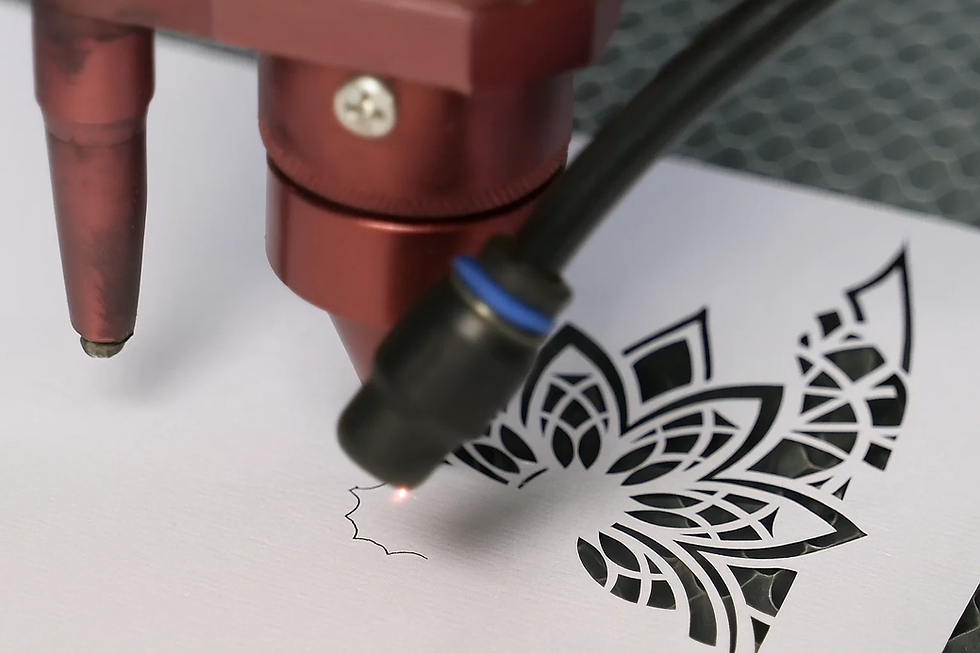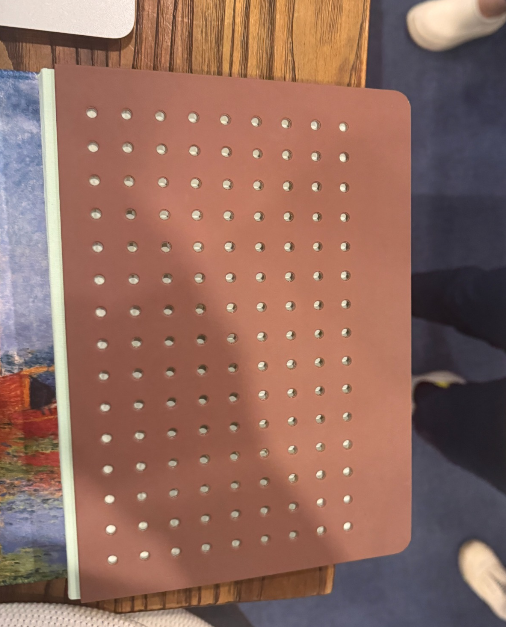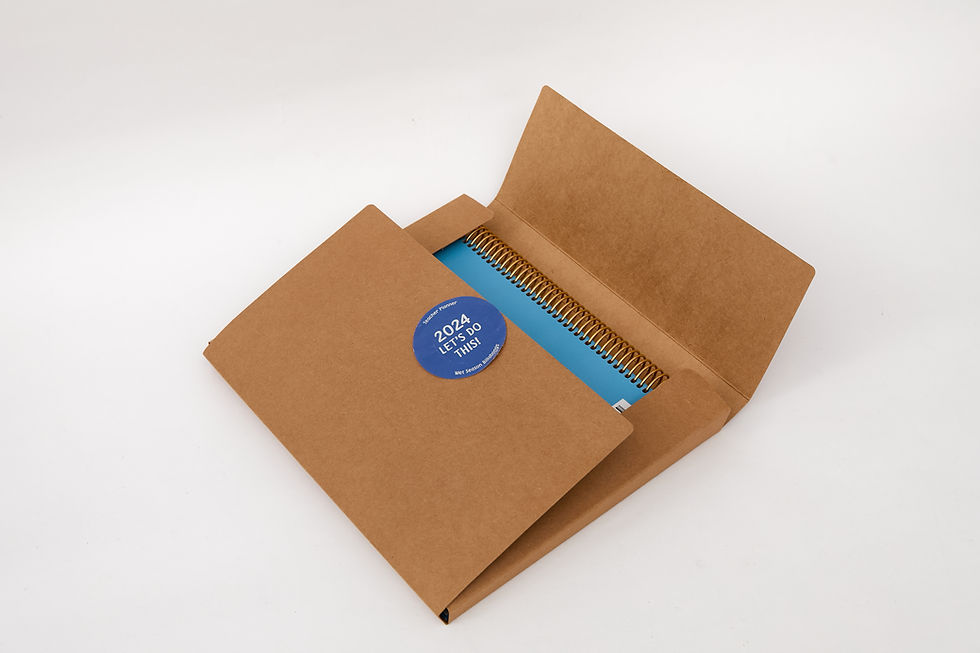Laser vs. Steel Die: Which Cutting Method Delivers Better Value for Hole-Punched Notebook Covers?
- Lion Paper Team

- Sep 8
- 6 min read
Updated: Sep 12
Laser cutting delivers high precision but at higher cost and slower production speed. Steel die cutting offers consistent accuracy, lower costs, and better scalability for bulk notebook cover manufacturing. For brands prioritizing efficiency and cost-effectiveness in hole-punched covers, steel die cutting often provides better overall value.

Quick Content Reach:
Introduction: Why Cutting Technology Matters in Notebook Manufacturing
When a buyer specifies hole-punched notebook covers, the cutting method directly impacts cost, precision, and product durability. Two leading techniques dominate the industry: laser cutting and steel die cutting. Choosing the right process can save 30–50% in costs while improving consistency and brand reputation. At Lion Paper Products, we help sourcing managers make informed choices backed by data, certifications, and decades of production expertise. If you’re evaluating cutting methods for your next order, reach out to us for a tailored consultation.
1. Understanding the Two Cutting Methods for Notebook Covers
Laser Cutting
Laser cutting uses focused beams to vaporize material, delivering extremely precise shapes and fine detailing. It is often chosen for low-volume or complex designs. However, lasers consume more energy, have higher per-unit costs, and limited throughput.

Steel Die Cutting
Steel die cutting uses sharpened steel blades mounted in a die block to punch out consistent shapes. Modern high-quality steel dies achieve tolerances within 0.1mm, ensuring uniformity across thousands of covers. This method excels in high-volume production, where cost efficiency and speed matter most.
2. Precision and Tolerance Comparison
Laser Cutting: Exceptional precision for intricate logos or micro-perforations. Best for premium, small-batch notebooks.
Steel Die Cutting: With improved tooling, hole size uniformity is 95%+ consistent, making it reliable for large-scale production runs.
Our in-house upgraded die technology ensures sharper edges, longer lifespan, and precision within 0.1mm, rivaling lasers at a fraction of the cost.

3. Cost Efficiency and Production Speed
Laser Cutting: Equipment costs and energy consumption make per-unit prices high. Cutting speed is slower, limiting batch sizes.
Steel Die Cutting: Once the die is created, per-unit cost drops sharply. Savings of 30–50% compared to laser methods are common.
For wholesalers and brand chains managing tight margins, steel die cutting delivers higher ROI.

4. Quality, Aesthetics, and Consistency
Laser edges can sometimes show slight burn marks on greyboard or thick covers, affecting aesthetics. In contrast, steel die delivers clean, uniform edges without discoloration. This consistency strengthens brand presentation at retail.
5. Environmental and Compliance Considerations
Laser cutting requires higher electricity use and may emit fumes depending on cover material. Steel die cutting, especially when optimized, reduces energy consumption and aligns better with FSC, ISO9001, and ESG standards. At Lion Paper Products, we perform Prop 65 and CPSIA tests annually, ensuring compliance for the U.S. and EU markets.
6. Scalability and Lead Time
Laser machines face throughput limitations. For example, producing 10,000 covers may take 2–3x longer than steel die cutting. Steel die cutting, integrated into automatic punching machines, achieves faster lead times—critical for seasonal orders or retail promotions.
7. Case Study: Upgraded Steel Die for a VIP Client
One of our VIP clients inquired about a hardcover spiral notebook with a greyboard cover. The key process requirement for this notebook is to punch out evenly shaped, circular holes on the rigid cover. Traditionally, there are two methods: laser cutting and low-quality steel dies. Laser cutting delivers high precision, but the manufacturing cost is expensive and production capacity is limited. Low-quality dies, on the other hand, often lead to issues such as misalignment, uneven hole sizes, low yield rates, and poor overall appearance of the finished product.

Client Pain Points
Laser cutting: High precision, but costly and low productivity.
Conventional die-cutting: Inaccurate positioning, uneven holes, low yield, poor appearance.
Lion Paper Solution
Technology: Upgraded die-cutting with specialized steel blades, achieving ±0.1mm accuracy.
Process: Integrated die-cutting technology, no need for laser or manual correction, enabling efficient mass production.
Results & Value
Quality: Uniform hole size, stable yield rate above 95%.
Response: Product analysis & quotation within 24–48 hours; samples ready in 5–7 days.
Eco-friendly: All materials & processes comply with ESG and environmental standards.
Cost: 30–50% lower than laser cutting, significantly reducing processing costs.
Delivery: Consistent with customer’s design, ensuring precise delivery.

Core Capabilities Highlighted
Technology – Innovative die-cutting solutions.
Quality – High yield & reliable performance.
Response – Fast quotation & sampling.
Delivery – Efficient and accurate mass production.
Eco-friendly – ESG-compliant materials & processes.
Cost – Competitive pricing, reduced production costs.
8. Which Method Fits Your Business Needs?
Choose Laser if: you need complex micro-details, small volumes, or luxury limited runs.
Choose Steel Die if: you need high volume, fast delivery, and lower unit costs.
Lion Paper Products offers both processes in-house, ensuring unbiased recommendations.
Laser vs. Steel Die Cutting Comparison Table
Conclusion: Making the Right Decision
For most wholesale buyers and stationery brands, steel die cutting provides the best balance of value, consistency, and scalability. Laser cutting retains its place in niche, premium applications. By working with a partner like Lion Paper Products—equipped with advanced machinery, strict QC, and 20+ years of experience—you gain not just production, but strategic value for your brand.
FAQs:
Q1: What is the difference between laser and steel die cutting for notebook covers?
A: Laser uses heat to cut with extreme precision, while steel die cutting uses sharp blades for speed and cost efficiency.
Q2: Which method is more cost-effective for large notebook orders?
A: Steel die cutting typically reduces unit costs by 30–50% compared to laser cutting.
Q3: Which method is more eco-friendly?
A: Steel die cutting consumes less energy and aligns better with FSC, ISO9001, and ESG sustainability standards.
Q4: Can both methods handle custom shapes for covers?
A: Yes, but laser excels at complex, detailed designs, while steel die cutting is best for simple, repetitive shapes.
Q5: Which cutting method should I choose for my wholesale stationery business?
A: For bulk production, steel die cutting offers better value. For niche premium products, laser cutting is ideal.
Are you looking for a reliable manufacturer? Reach out to Lion Paper for a free quote and consultation. Let’s collaborate on creating custom writing paper products that will set your brand apart from the competition!







Comments